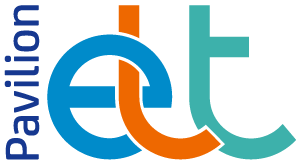Supardi, Indonesia
I am Supardi, one of the lecturers at the University of Jember. At this university I am teaching Legal English (LE) to the first year law students at the second semester. About 400 students, divided into eight classes which each class consists of 80 students with different English level, attend LE course every year. Since the Covid-19 outbreak towards the end of 2019 I have been teaching this course online with the use of the Zoom platform.
As well as creating my own materials adapted from some learning materials resources of LE, I also use published course books such as Introduction to International Legal English by Amy Krois-Lindner and Matt Firth, and International Legal English by Amy Krois-Lindner for teaching grammar and such skills as reading, writing, listening and speaking. In addition, I also use websites such as https://anglofon.com/test-your-legal-english-terminology for teaching basic LE terminology and https://www.nationaltrust.org.au/educationprograms/3d-interactive-court-room/ for teaching vocabulary concerning people in the courtroom.
Whatever the subjects, there are at least three most important things about teaching for me, namely, learning objectives, instructional activities, and assessment. I am sure that with these aspects, my teaching of LE can be effective and the students become easier to acquire LE.
Vanesa, Argentina
My name is Vanesa Polastri and I work at an English language teacher training college in the suburbs of Buenos Aires province, Argentina. I am in charge of Written Discursive Practices as well as Children’s Literature, and together with a colleague, Stella Maris Saubidet Oyhamburu, I started an extension project in 2019 which was open to the community. The objectives of this space were to favour different modes of pedagogical intervention, to allow for reflection on the teacher role and, ultimately, to contribute to the integral development of our students as future teachers and to the continuing professional development of current teachers. It was aimed at both teachers-to-be and graduate teachers from our institution and from neighbouring colleges. That first year we organised a series of seminars and workshops, on a pay-what-you-can basis, delivered by external teachers on drama tools, transmedia narrative, comprehensive sexuality education and literature. In 2020, in the midst of Covid-19 pandemic, it was hard to re-adjust and we only recommended free webinars, out of the vast and varied online offer of high quality there was, to our learners. In 2021 we managed to coordinate free webinars on radio drama, didactic transposition of infantile literature, exploitation of images, and identity in postcolonial readings.
Suchetha, Singapore
I have been delivering face-to-face English lessons for multiracial secondary learners at British Council, Singapore, and for the last two years, mostly teaching live online classes from home via Zoom digital platform. Each two-hour lesson is given to 25 Upper Intermediate learners and teachers adapt coursebooks to fit learner needs.
Since 2020, teachers worldwide had to face the challenges of delivering engaging digital lessons. Naturally, teacher conversations centred around three big questions: How to wean learners away from their ‘love affair’ with digital devices; How to help them balance their physical and virtual lives and How to deal with the stresses of the pandemic, both in and out of classrooms. In quest of answers to these questions, I found a wonderful path – embracing ‘mindfulness’ in both my personal life and in classrooms.
To quote Kabat-Zinn (2012), ‘mindfulness is paying attention in a particular way on purpose, in the present moment and non-judgmentally.’ As with any skill, since learner training was required, I exposed my learners to mindfulness, by first explaining the science behind the practice, then following up with modelling simple five-minute activities during online lessons.
One such example, the fun box breathing technique, made a great impact on learners by calming them down and relieving stress. Another example, the body scan exercise, helped distracted teens attend to classroom tasks. A gratitude journal worked wonders and helped create a positive learning environment.
It was gratifying to observe the transformation over two months with students taking the lead by creating a culture of mindful practice in their learning and classroom behaviours. Student reflections threw light on the effect of mindfulness: I know me better now, so I don’t get annoyed with friends easily, I am more relaxed when writing exams, I’m not addicted to online games and focus more on lessons.
Now, amidst the global pandemic, teaching mindfulness in the classroom has become crucial. Hence while planning lessons, I have started asking myself these questions: How to ensure student well-being through such practices in classrooms? How to insert mindful moments for students to maximise their learning and reflect on it?
Going forward, I would like to see mindfulness being integrated into curriculum-themed activities and teachers and parents taking an active participation in leading mindful activities.
Dan, online
I have been working for Woospeak since 2014, an online language centre based in France but with students with different backgrounds and located in different countries. The school works primarily with companies, meaning that the vast majority of learners have been adults who wish to focus on English for Specific Purposes seeing as they need the language for professional reasons or to pass exams. I have also had young learners who wished to experience the online course following recommendations from their parents. While I have been teaching other languages at the school, English is the most popular language owing to its expanse. The time spent working at the school has fostered the development of my own teaching method, based on elements of Communicative Language Teaching and the Direct Method, with a focus on original tasks based on authentic resources. This has been valued by several learners whose commitment has enabled them to succeed professionally or obtain university degrees in their field.
The global pandemic prompted several schools around the world to include online or blended learning, which is something that was new to many educators and learners worldwide. During this period, I joined International House and also collaborated with institutions which were used to less communicative and more teacher-centred approaches which appear to be influenced by culture. Helping students understand the importance of interaction from the very start can be a major challenge in certain cultures, not only because they are not familiar with it but because learner-centred approaches are said to be considered subversive. Similarly, learners that are not used to using technological tools – regardless of their age – initially find online learning challenging, despite the fact that teaching occurs synchronously, bridging the gap between the more independent asynchronous teaching and its more traditional face-to-face counterpart. Supporting learners in these situations has proven vital as their technical confidence grows as well, thereby supporting their quest for linguistic mastery. Thirdly, the use of L1 is an oft-debated topic which deserves some attention. Some schools ban it while others make it the heart of their curriculum. While learners should since the start be prompted to reason in their target language, translation – a type of mediation according to the Council of Europe – can be used to consolidate the meaning of new lexis, thereby allowing for a comparison of languages which can foster their prowess.
I see teaching as an act of care for the object, process and recipient of education, which I firmly believe in. In my free time, I have invested in additional tertiary education and research in fascinating fields such as history and philosophy, which have deeply informed my teaching practice, especially as the number of students requesting to delve into certain topics has increased. Finally, my long-standing activity as a musician has fostered the nurturing of inclusive values, in a context where many learners see the potential and love of learning language through song.
Oh Pandemic, where art thou?
By Louisa Cristo, Spain
You’ve invaded every crevice
Pervaded every pore
You’ve invited every devil
To ensure I felt unsure
You’ve tried to overpower
The confidence I felt
In the teaching classroom
On my knees I’ve often knelt
Hybrid, Zoom, unstable WiFi
Face-to-face with Google Meet
Open windows in the winter
Can’t feel my fingers – there’s no heat
Oh Pandemic, where art thou?
There you are my vicious friend
Full of vile and deceit
There you are my savage shadow
On the podium of conceit
Just hold on Sir Pandemic
I won’t give in quite that fast
I’m a teacher after all
And we’re creatures built to last
So give it to me Sir
I’m the hybrid lumberjack
Face-to-face?
Got gel aplenty
And on my third Covid vac
Bring it on misguided bully
You don’t scare me little wack
In fact, you’ve made me hero – super
More determined
That’s a fact
Let’s have at it cocky Covid
Where ya goin’ little scum?
Got you where I want you
Just right here – under my thumb
Got new tools in my teaching toolkit
Got new skills that light me up
Got a fire into my belly
Got new confidence in my cup
You don’t scare my silly Pandy
I’m a teacher if you recall
We’re extraordinary beings
All for one and one for all





